This paper is reviewed in accordance with the Peer Review Program of IRA Academico Research
The Ethical Dilemma in The Mill on the Floss: The Struggle between ‘Antigone’ and ‘Creon’
Abstract
Keywords
Full Text:
PDFReferences
Ablow, R. (2007). The marriage of minds: Reading sympathy in the Victorian marriage plot. University of Toronto Press. https://doi.org/10.3138/9781442692022
Blake, K. (2005). Between economies in The Mill on the Floss: Loans versus gifts, or, auditing Mr. Tulliver’s accounts. Victorian Literature and Culture, 33(1), 219–237. https://doi.org/10.1017/S1060150305001124
Byatt, A. S. (1980). Interview with Juliet Dusinberre. In J. Dusinberre (Ed.), Women writers talking. Columbia University Press. https://doi.org/10.7312/dusin5076
Eliot, G. (2003). The works of George Eliot. Cambridge Scholars Publishing. https://doi.org/10.1007/978-1443824026
Eliot, G. (2003). The Mill on the Floss. Penguin Classics. https://doi.org/10.1007/978-0141439624
Fessenbecker, P. (2018). Sympathy, vocation, and moral deliberation in George Eliot. ELH, 85 (2), 501–532. https://doi.org/10.1353/elh.2018.0018
Guth, B. (1983). The tragedy of The Mill on the Floss. Studies in the Novel, 15(4), 356-363.
Han, Z. (2014). Antigone: The Resistance of Naked Life: On Žižek’s Ideological Interpretation of Antigone. Marxism and Reality, 1.
Hobsbawm, E. J. (1971). From social history to the history of society. Daedalus, 100 (1), 20–45. https://doi.org/10.2307/20023990
Han, H., & Zhou, L. (2022). On Ethical Choices in Antigone. Sichuan Drama.2022(03).
Kiesel, C. (2014). The Mill on the Floss’s Tom Tulliver and the Victorian Bluebeard type. Victorian Review, 40(1), 117–134. https://doi.org/10.1353/vcr.2014.0010
Lacan, J. (2006). Écrits (B. Fink, Trans.). W. W. Norton & Company. (Original work published 1966)
Long, J., & Jia, Y. (2024). Family community construction from the perspective of ethics. Zhongzhou Academic Journal, 5.
Loesberg, J. (2019). Aesthetics, ethics, and unreadable acts in George Eliot. In Knowing the past (pp. 121-148). Johns Hopkins University Press. ISBN 978-1-4214-2895-3
Moldstad, D. (1970). The Mill on the Floss and Antigone. PMLA, 85(3), 527–531. https://doi.org/10.2307/1261433
Nie, Z. (2014). The introductory theory of ethical literary criticism. Peking University Press. ISBN 978-7-301-12345-6
Ruskin, J. (2012). Praeterita. Oxford University Press.
Spillman, D. S. (2017). “All that is solid turns into steam”: Sublimation and sympathy in George Eliot's The Mill on the Floss. Nineteenth-Century Literature, 72(3), 338-337. https://doi.org/10.1525/ncl.2017.72.3.338
Wang, Y. (2019). From “Antigone” to “Higne”: The “use”of literature in psychoanalytic ethics. Studies in Foreign Literature, 41(2).
Wu, Q. (2003). Virginia Woolf’s feminism. Journal of PLA Foreign Language University, 6.
This article is licensed under a Creative Commons Attribution-NonCommercial 4.0 International License. This article can be used for non-commercial purposes. Mentioning of the publication source is mandatory while referring this article in any future works.



